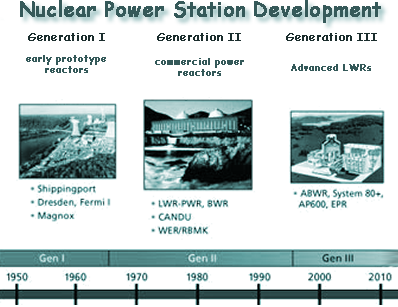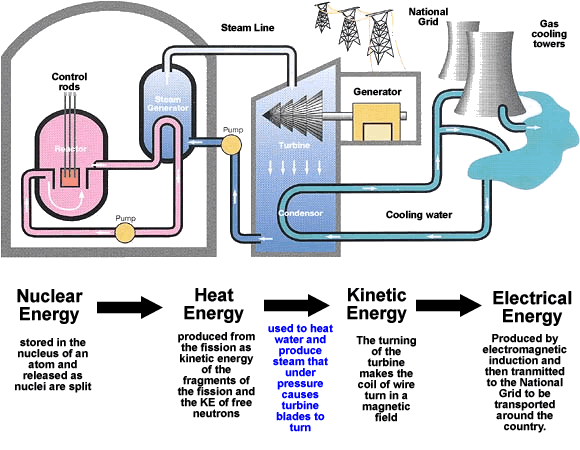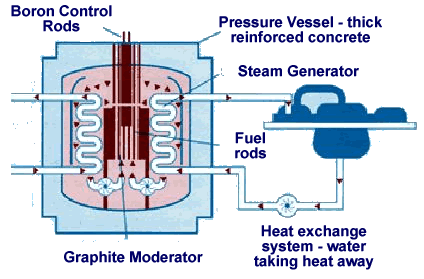Nuclear Power Plant
Nuclear Power has been in operation since the 1950s. In UK schools we have, for some while, been studying nuclear power plants whose design is now obsolete. However the basic workings of the nuclear power station are the same. Modern syllabuses shy away from getting your to study a particular type of power plant, but rather try to get you to understand the generic processes and safety issues associated with the operation of a nuclear power plant. You should look carefully at your syllabus when studying nuclear power, and also be aware that many of the web sites that give information on the processes are financed by the nuclear power industry, as are leaflets that may be handed out to you in scool. They therefore tend to put a rosy complexion on the face of nuclear power. I suggest you look for sites that criticise the industry as well as those that promote it. In a nuclear power plant use is made of the fission reaction. Most power plants produce electricity by first boiling water to produce steam. The steam is used to spin a turbine. The shaft of the turbine spins the generator (a large coil of wire) between two magnets. The spinning coil of wire generates electricity by electromagnetic induction.
The main difference between a nuclear power plant and other kinds of power plants lies in the way the water is heated to steam. In a nuclear power plant, heat is produced by nuclear fission - splitting atoms - rather than, for example, the combustion of oil, gas, or coal. A nuclear reactor is a device in which nuclear chain reactions are initiated, controlled, and sustained at a steady rate. The heat produced is carried away by a heat exchange system and then turned into electrical energy via a generator system. The diagram below shows one of the earliest types of reactor - a Magnox reactor - most of these are in the process of being decommisioned now.
Nuclear Power in the UKClick on the map to open a large readable version of the graphic. |
Follow me...
|









